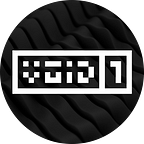8 Basic Essentials for Music Production: A Beginner’s Guide
Here is a basic guide for beginners to get an instant idea about the essentials required for Music Production professionally.
You have been scrolling the internet, and you have found yourself one promising career, Music Production. To delve into the Music Industry is a dream for many people. But there is so much information out there that it confuses where to start from. And especially for a beginner, it is always a question yet to be answered, “What Assets do I need to start a Music Career professionally?” But, No worries, we will break everything down into 8 Basic Essentials that are important for you as a beginner.
Computers
These days computers are a necessity rather than a luxury. Don’t worry if you have a potato PC or Laptop. The good news is that Music Production Software is not that processor hungry so you don’t need to upgrade it now. You can always upgrade later.
Audio Interface
Usually, your computer or laptop already has a small chip built inside that generates sound and converts the audio from analog to digital and back to analog. You can find a line out, headphones out, and a microphone in the jack on your computer or laptop.
But, there are few issues with the inbuilt solution-
- The first problem with the built-in solution is that the quality of the converters and preamps lacks in terms of quality. You won’t be able to achieve good results when recording your voice or other instruments like the guitar.
- Another down point of the “inbuilt” audio chip is that it comes with drivers that generate latency. So if you want to record your electric guitar live through a virtual guitar amp the latency will be so big that you won’t be able to record a decent take.
- The onboard chip doesn’t offer Phantom Power which is important while working with condenser microphones and instruments like bass or electric guitars.
DAW Software / Sequencer
The DAW (Digital Audio Workstation) is your recording and sequencing software. There are no major differences between all the DAWs. They all sound the same and provide you with the same basic features to compose and record music. Of course, every DAW has its strong and weak points and you have to experiment with the demo versions to find out what DAW fits your workflow.
Check out 7 Great Industry Standard DAWs.
Studio One 3 Professional — A very easy-to-learn DAW with a very intuitive workflow.
FL Studio — A very easy User Interface for beginners to understand every setting with ease.
Ableton Live 9 — A DAW that is very popular among DJs and electronic dance music.
Reaper 5 — Very affordable DAW with great features.
All these DAWs mentioned above are multi-platform, which means you can use them on a PC or on a Mac. If you happen to have a Mac you can also look into Apple’s own DAW:
Apple Logic X — A DAW for Apple users, affordable price.
Check out 6 Free Daws to get your Music Career Started.
Midi Controllers
With your DAW Software, you have many great virtual instruments at your fingertips.
But sometimes you need a Real feel rather than randomly clicking notes, right?
You need a midi keyboard that connects via USB to your computer and sends MIDI note data so the computer knows what notes you’re playing.
Midi keys are often available in different sizes. It’s usually 25, 49, 61, and 88 keys. The 25–61 range oftentimes has light-weighted action. The more expensive 88 keys often times have weighted action. They feel a lot heavier, compared to a real piano.
Studio Monitors
Your laptop or generic small computer speakers won’t cut it because they often time exaggerate the bass and high-frequency response. This means that when you start going to mix your track you put less bass and fewer highs into your mix.
This is why you need a studio or near-field monitors with a linear frequency response that provides a neutral, uncolored sound to judge your mix.
Headphones
If studio monitors are too pricey for you or your neighbors always complain about loud music you should get a decent pair of studio headphones. The same rules as with the studio monitors apply. Don’t get Hi-Fi headphones with an exaggerated low-end and high-end response.
Microphones
There are a lot of great microphones out there. Whether you want to record a guitar cab, some vocals, or any other instruments. With microphones, it’s always a matter of taste, because the options are basically endless. Nevertheless, there are a couple of microphones that established themselves in the home recording community:
Studio Desks, Furniture, and Other Appliances
There are desks that are intended for studio use but these are very expensive. You could buy one cheap table instead but don’t forget about the stands for other instruments. Also, Monitor stands are great for better space and decreasing the audio reflections that could result when putting the studio monitors on your desk. Other useful assets for Music Production could be various musical instruments, stands, and some acoustic treatments.
So, here was a basic guide for beginners to get an instant idea about the essentials required for starting a career in Music Production professionally. However, this is not at all a mandatory option to have each of the assets mentioned above to create Music, rather these are the basic elements required by the Music Producer to make quality music easily and more efficiently.
Check out other important Resources related to Music Production:-
- 5 Great YouTube Channels for Music Production
- 5 Great software and Tools for Music Production
- Importance of Music in Games
- Tips to Make Better Bass
